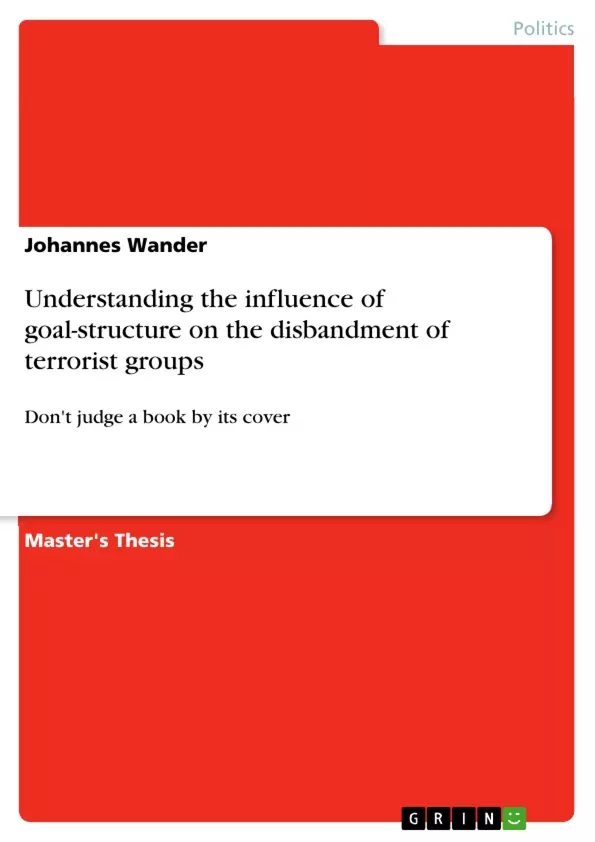Very little is known about the circumstances that lead a terrorist group to cease their operations in one way rather than another. This study seeks to answer the question what impact the goal-structure of a terrorist group has on their disbandment. A new framework describes the structure of goals by differentiating operative and official goals of terrorist groups along their geographical scope, their final goal’s extent, and the respective effectiveness this is accomplished by. I argue that strategic or abstract goal-structures determine the way a terrorist organisation ends. By applying a multinomial logistic regression model with a novel dataset on 155 groups’ goal-structures, I show that a more strategic goal-structure increases the likelihood of splintering and victory, while an abstract goal-structure increases the likelihood of defeat by police or military force whilst also leading terrorist groups to join non-violent political participation.
Inhaltsverzeichnis (Table of Contents)
- Abstract
- Introduction
- Literature Review
- Roots of Terrorism
- Characteristics of Terrorist Groups
- Terrorist Groups' End
- Gap & Contribution
- Theory
- Terrorism
- Goal-structure & Criteria
- Argument & Causal Mechanisms
- Research Design
- Datasets, Case Selection & Timeframe
- Operationalisation
- Regression Model
- Analysis
- Empirics
- Politicisation
- Victory
- Splintering
- Policing
- Military Force
- Alternative Explanations
- Reflections
- On the Impact of Goal-Structure
Zielsetzung und Themenschwerpunkte (Objectives and Key Themes)
This study investigates the impact of a terrorist group's goal-structure on their disbandment, a topic with limited existing research. The study aims to answer the question of how a terrorist group's goal-structure influences their cessation of operations. It introduces a new framework to categorize the structure of goals based on operative and official goals, their geographical scope, the extent of their final goal, and the effectiveness of their actions. The thesis argues that a strategic or abstract goal-structure plays a crucial role in determining how a terrorist organization ends.
- Goal-structure and its impact on terrorist group disbandment
- The role of operative and official goals in terrorist group behavior
- The influence of geographical scope, final goal extent, and effectiveness on disbandment outcomes
- Different pathways of disbandment, including politicisation, victory, splintering, policing, and military force
- The relationship between strategic and abstract goal-structures and various disbandment outcomes
Zusammenfassung der Kapitel (Chapter Summaries)
The study begins with a comprehensive literature review that examines the roots of terrorism, characteristics of terrorist groups, and different ways terrorist groups end their operations. It then introduces a new framework for understanding the goal-structure of terrorist groups and explores the relationship between goal-structure and disbandment outcomes. The research design outlines the datasets used, case selection, timeframe, operationalisation of variables, and the regression model employed in the study. The analysis chapter provides empirical findings on the impact of goal-structure on different disbandment outcomes, including politicisation, victory, splintering, policing, and military force.
Schlüsselwörter (Keywords)
The main keywords and focus topics of this study are: goal-structure, terrorism, disbandment, ideology, counterterrorism, operative and official goals, geographical scope, final goal extent, effectiveness, strategic and abstract goal-structures, politicisation, victory, splintering, policing, military force, and alternative explanations.
- Quote paper
- Johannes Wander (Author), 2016, Understanding the influence of goal-structure on the disbandment of terrorist groups, Munich, GRIN Verlag, https://www.grin.com/document/340976



